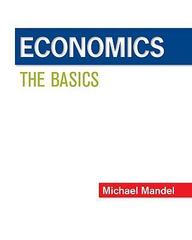When we met William Jaeger, he was trying to decide whether to wait for the storm or to harvest now. Now imagine he knows a guy in Southern California - the direction from which the storm is coming - who can go check the storm to determine if it is warm or cold. With this information, Jaeger can be certain of whether the storm would produce botrytis or not.However, the guycannotoffer any information on whether the storm will in fact hit Freemark Abbey Winery?i.e., he will remain uncertain about whether the storm will hit or not. How much should he be willing to pay to get his guy to check the temperature of the storm? (Does it change his expected value and, hence, the quality of his decision?).Show your reasoning.
Freemark Abbey Winery (Abridged) In September 1976 William Jaeger, a member of the partnership that owned Freemark Abbey Winery, had to make a decision: Should he harvest the Riesling grapes immediately, or leave them on the vines despite the approaching storm? A storm just before the harvest is usually detrimental, often ruining the crop. A warm, light rain, however, will sometimes cause a beneficial mold, botrytis cinerea, to form on the grape skins. The result is a luscious, complex sweet wine, highly valued by connoisseurs. The Winery Freemark Abbey was located in Napa Valley, California. The winery produced only premium wines from the best grape varieties. Of the 25,000 cases of wine bottled each year, most were Cabernet Sauvignon and Chardonnay, About 1,000 cases of Riesling were also bottled, (A case contains 12 bottles of wine.) Winemaking Wine is produced when fruit sugar, which is naturally present in the juice of grapes, ferments. The wine ages in barrels for one or more years until it is ready for bottling. By various decisions during vinification for example, the type of wooden barrel used for aging the Winemaker inuences the style of wine produced. The style adopted by a particular winery depends mainly on the owners' preferences, though it is inuenced by marketing considerations. Usually, as the grapes ripen, the sugar levels increase and the acidity levels decrease. The winemaker tries to harvest the grapes when they have achieved the proper balance of sugar and acidity for the style of wine sought. The ripening process is variable, however, and if the weather is not favorable, the proper balance might never occur. Several different styles of Riesling (more accurately, Johannisberg Riesling) are on the market, A rare style results when almost-ripe Riesling grapes are attacked by the botrytis mold. The resulting wine is extraordinary and the botrytis itself adds to the wine's complexity, Freemark Abbey had already produced a botrytised Riesling from its 1973 vintage (see Exhibit 1). Jaeger's Decision Problem From the weather reports, Jaeger concluded that there was a fifty-fty chance that the rainstorm would hit the Napa Valley. Since the storm had originated over the warm waters of Mexico, he thought there was a 40% chance that, if the storm did strike, it would lead to the development of the botrytis mold. If the botrytis did not form, however, the rainwater would merely dilute the berries. This would yield a thin wine that would sell wholesale for only about $2.00 per bottle, about $0.85 less than Iaeger could obtain by harvesting the not-quite-ripe grapes immediately and eliminating the risk. Freemark Abbey always had the option of not bottling a wine that was not up to standards. It could sell the wine in bulk, or it could sell the grapes directly. These options would bring only half as much revenue as bottling and selling the wine wholesale, but would at least avoid damaging the winery's reputation, which would be risked by bottling an inferior product. If Iaeger decided not to harvest the grapes immediately in anticipation of the storm, and the storm did not strike, Iaeger would probably leave the grapes to ripen more fully. With luck, the grapes would result in a good wine selling for around $3.50 wholesale. Even with less favorable weather, the grapes would yield a light wine selling at around $3.00. Iaeger thought these possibilities were equally likely. A third possibility was a dip in acidity that would produce a 'low acid' wine that would be priced at about $2.50. Iaeger felt that this third possibility had roughly a 0.2 probability. The wholesale price for a botrytised Riesling would be about $8.00 per bottle. Unfortunately, the same process that resulted in this fine, sweet wine also caused a 30% reduction in the total juice. The higher price was therefore partly offset by a reduction in quantity. Although fewer bottles would be produced, there would be essentially no savings in Vinication costs. The winery's vinification costs were about the same for each of the possible styles of wine and were small relative to the wholesale price. Exhibit 1 Freemark Abbey 1973 Botrytised Wine Label








